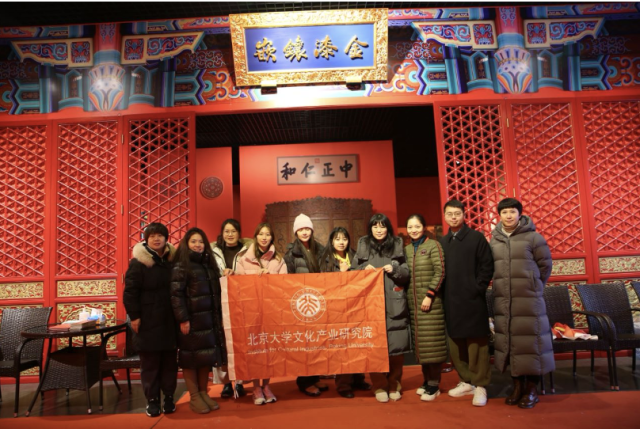
Teachers and students of Institute for Cultural Industries, Peking University walked into the Beijing Golden Lacquer Mosaic Art Museum
On December 14, 2023, visiting scholars and master's and doctoral students from the Institute of Cultural Industry and the School of Art of Peking University came to the Beijing Golden Lacquer Mosaic Art Museum in Chaoyang District, Beijing. Beijing Golden Lacquer Mosaic Art Museum is an intangible cultural heritage-themed museum built by Beijing Golden Lacquer Mosaic Co., Ltd., a famous time-honored enterprise in Beijing and a national intangible cultural heritage project. The museum has a total collection of more than 300 pieces (sets) of gold lacquer inlaying tools, drawings and carvings, color painting, inlaying, gray carving and other craft categories, contemporary arts and crafts masters' art masterpieces, national characteristic lacquerware and national gift works. Bai Qun, the sixth generation of the Qing Palace Building Office and the representative inheritor of the national intangible cultural heritage project "Golden Lacquer Inlaid Decoration Technology", is the founder and chairman of the museum. On the same day, Wang Xuemei, assistant curator of the museum and director of the party and government office, warmly welcomed the teachers and students and accompanied them on the visit. Hou Xiao, deputy director of the party and government office, made a relevant explanation.
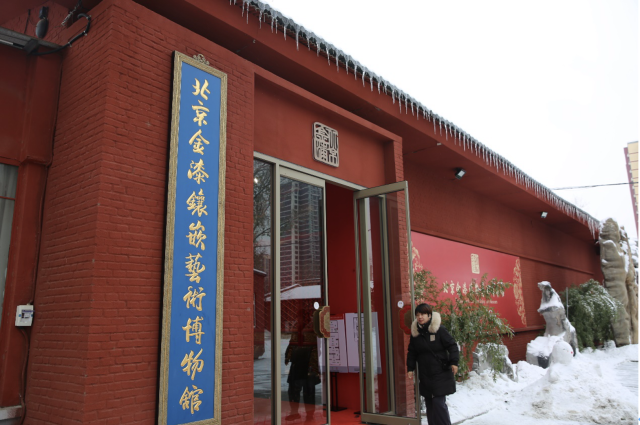
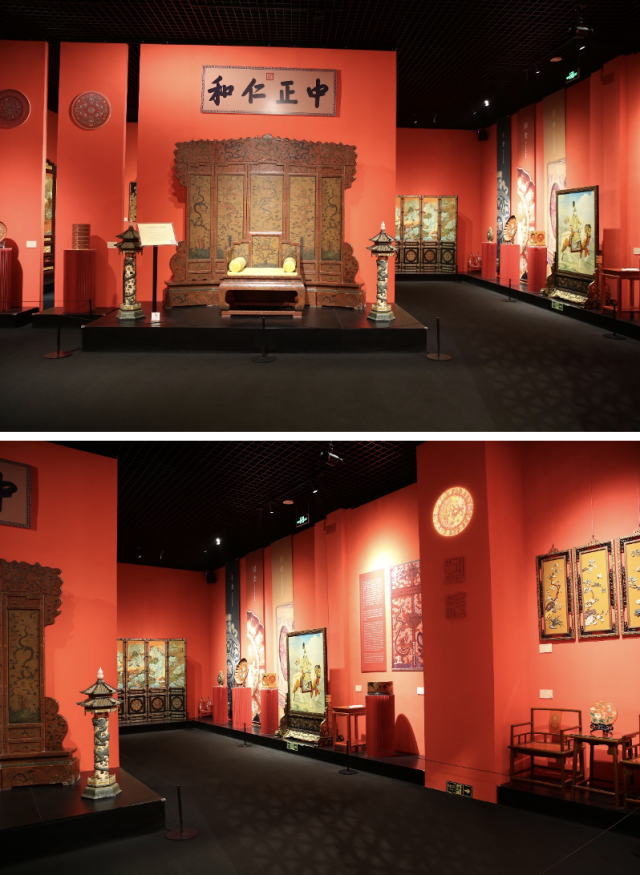
Gold lacquer inlay is an important category of traditional Chinese lacquerware. Gold refers to the gold used in the production process, including gold pieces, gold foil and gold powder. The Ming Dynasty lacquer art monograph "The Record of Ornaments" is called "Golden Paint", a "Golden Lacquer". The processes covering color painting, carving and engraving can be collectively referred to as "golden paint." Paint, that is, the traditional natural paint. "Inlay" is the combination of "golden paint" and "inlay" process, which refers to the carving of various natural soft and hard jade, animal bones, horn carvings into figures, flowers and birds, mountain stones, platforms and other patterns, and inlaid on the lacquer tire. The ancients blended gold, lacquer and wood and embedded with expensive jade jewelry to make jewels and elegant utensils, showing a distinct and unique court aesthetic.
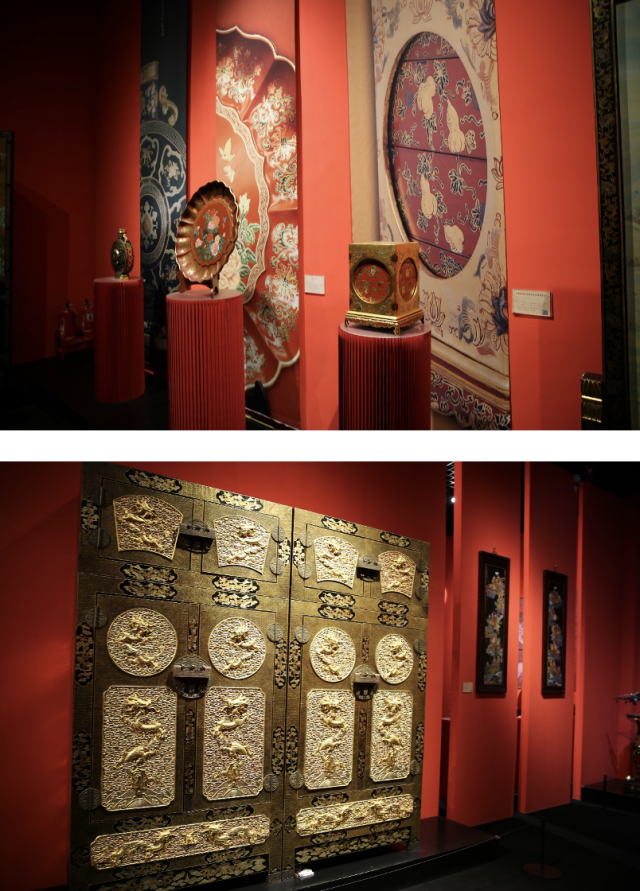
In the main exhibition hall, Hou Xiao explained in detail the historical origin, process steps, decoration techniques, etc. of gold lacquer inlay for teachers and students, compared with the eight auspicious silver ingot set box, the royal lacquer seawater dragon pattern trembling top box cabinet, Dream of Red Mansions screen of Dew Autumn Chrysanthemum, etc. The mysterious texture, exquisite style and dazzling light made everyone exclaim again and again.
Lacquerware comes from China. As early as prehistoric times, our ancestors began to apply a lot of the magic of paint in living objects. From the lacquer bow unearthed 8,000 years ago at the cross-lake bridge site in Hangzhou to the lacquer bowl in the Hemudu period 7,000 years ago, it proves that the Chinese ancestors have found the glue, anti-corrosion and other functions of paint in continuous trial and error. The golden lacquer mosaic art came from prehistoric times, through the prosperous Han and Tang Dynasties, entered the court of the Ming and Qing Dynasties, and finally stayed among the people, becoming an art that transcends time and shines brightly. Gold lacquer inlay is a traditional handicraft in Beijing. It is one of the eight masterpieces in Yanjing. It was also included in the second batch of national intangible cultural heritage in 2008.
According to Hou Xiao, the steps of the gold lacquer inlay process have gone through five stages: wooden tire, framed cloth, gray ground, ornament and carving. Decoration is the most important part of icing on the cake. Decoration alone can be divided into four core processes: painting, carving, engraving and inlaying. Carving filling and engraving ash are for subtraction, inlay for addition, one plus one minus, gold paint inlaid with the icing on the icing on the cake on the delicate and smooth paint surface, and even icing on the cake.
Moving to the alien scene, the extreme complexity of beauty attracts the view in different ways. Subsequently, teachers and students visited the charming exhibition hall with ethnic characteristics, the overseas return exhibition hall, the "Qiangong Ya Yun" Chinese ancient bed art special exhibition, etc.
A jewelry box, a screen, a large cabinet... Countless artistic treasures float, dazzlingly beautiful. After the lingering study tour, teachers and students felt deeply--
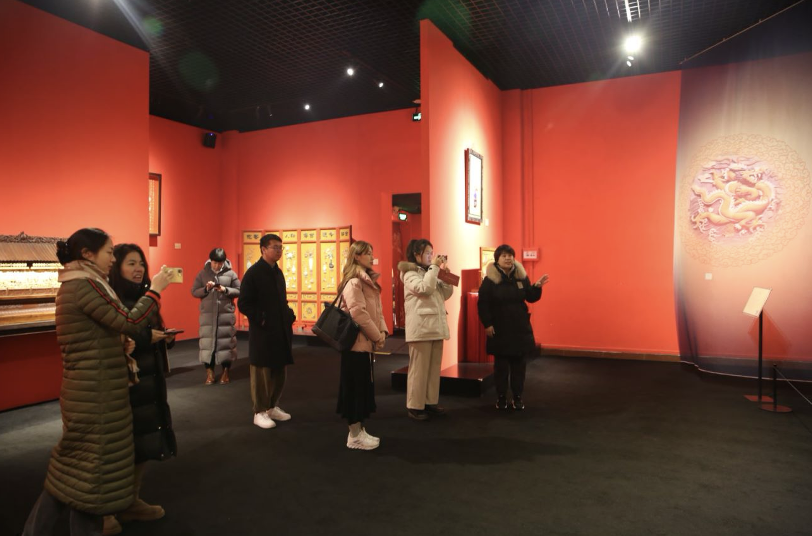
Fan Xiaorong, a visiting scholar at the School of Art of Peking University, said that visiting the gold lacquer mosaic museum of the national intangible cultural heritage is a profound cultural experience. As an ancient art form, gold lacquer inlay not only shows exquisite craftsmanship, but also a cultural inheritance. All kinds of gold lacquer mosaic works on display in the museum show the delicacy and depth of traditional Chinese craftsmanship. Each exhibit is a witness of time, telling the story of history, and also showing the importance of traditional skills in modern society. This visit not only gave me a deeper understanding of the golden lacquer mosaic art, but also made me deeply feel the importance of protecting and inheriting intangible cultural heritage.
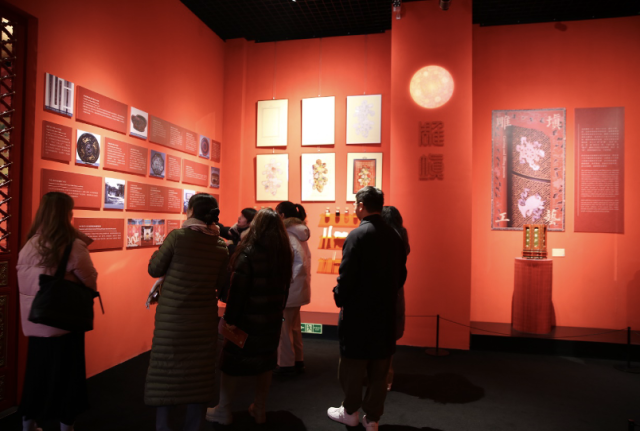
Zhang Jiayi, a 2022 MFA master's student, believes that the Beijing Golden Lacquer Mosaic Museum is a feast belonging to Chinese court culture. Entering the venue, all kinds of lacquerware are brilliant and brilliant, showing the beauty of the "wrong color and gold" of traditional Chinese culture. With the strength of people, it is ingenious. At the same time, I was also very lucky to learn various techniques such as Baibao inlaying, engraving ash, tracing gold, etc. At the same time, I also witnessed countless exquisite works of the Ming and Qing Dynasties, such as screens, Baigong sedan chairs, pull-out beds, eight immortal tables, etc. Only through decades of ingenuity can non-genetic inheritors exercise the most exquisite skills and make perfect gold lacquer mosaic works. Thank you very much for collecting and preserving such exquisite works of art and arranging explanations, so that we can appreciate the essence of culture. Li Zhuzi, a 2023-level MFA master's student, said that national etiquette-level works have encountered a cold encounter in the market. The old people who have inherited for thousands of years have come to this era. Young people have long been pursuing other fashions, which may be the common dilemma of contemporary intangible cultural heritage. When most people think that Chinese beauty is light and elegant, I hold another view. Mr. Zong Baihua said that the color is wrong. There was royal wealth in the Song Dynasty painting school. For example, gold lacquer carving is not low-key and extremely luxurious. A grand atmosphere of wealth can show China's heritage and be confidently published in the world circle of friends.
This study tour aims to provide the foundation for in-depth cooperation between the Cultural Industry Research Institute of Peking University and the Beijing Golden Lacquer Mosaic Art Museum in the innovative protection of cultural heritage and the development of museum derivatives. Through campus cooperation, give full play to the theoretical foundation and planning design of the Cultural Industry Research Institute of Peking University, understand the needs of museums through investigation and research, and make suggestions for promoting the protection and development of intangible cultural heritage.
